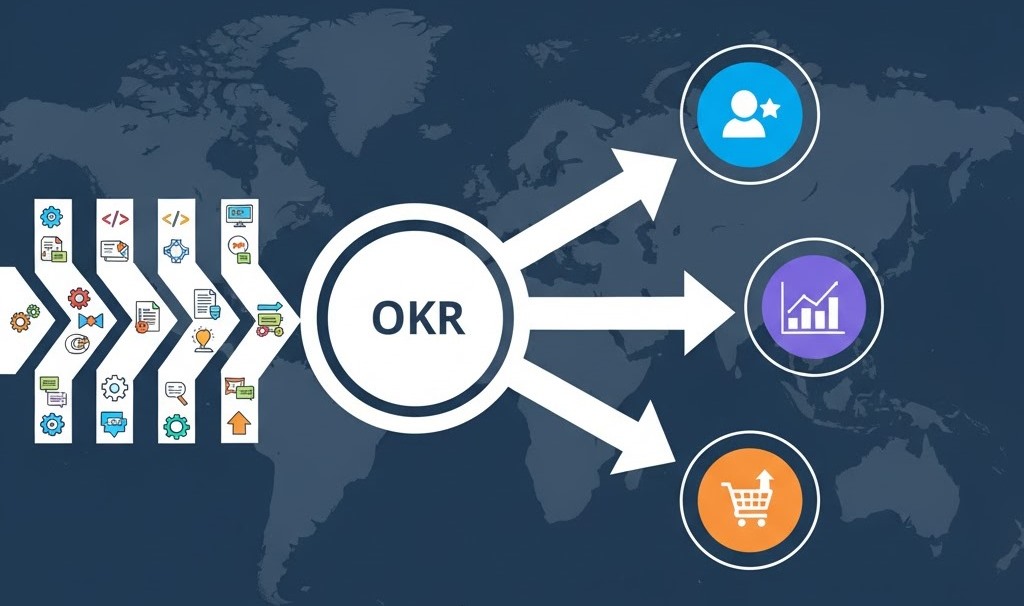OKR in Product Development: The Key to Measuring Customer-Centered Success

The world of product development is a dynamic arena filled with ever-evolving customer expectations. In today's competitive environment, success is measured not just by technical outputs but also by the impact it creates on the customer experience. The OKR (Objectives and Key Results) methodology is the most powerful tool for putting this impact-focused mindset into action and quantifying your success.
1. What is Customer-Centric Product Development?
Customer-centric product development means focusing on the customer's real problem. In this approach, success is measured by "tangible evidence of customer value."
Core Principles:
• Build Empathy: Shape product decisions with user behavior and needs analysis.
• Focus on Value: Center your measurement on the impact your team creates on the customer experience.
• Continuous Feedback: Drive product strategy with data analysis and the voice of the customer.
2. How Do OKRs Apply to Product Development?
OKRs channel the energy of product teams toward tangible, value-creating results. Successful OKR writing requires balancing inspiration and measurability:
Objective: Inspiring, guiding, and clear. It should answer the question, "Where do we want to get?"
Key Results: Measurable, ambitious, and reflect customer value. It should answer the question, "How will we know we've gotten there?"
For example:
Objective: Enable users to discover the value of the product.
• Key Result 1: Increase the activation rate from 30% to 45%
• Key Result 2: Increase the task completion rate to 60%
• Key Result 3: Increase the user satisfaction score above 8
This OKR example measures not only team outcomes but also tangible improvements in the customer experience and the value created.
3. Metrics That Can Be Used to Measure Customer-Centric Success
Determining the right Key Results for a successful product strategy depends on choosing the right metrics. These metrics provide clear answers to the question, "Does our solution work?":
• Net Promoter Score: Measures user loyalty and propensity to recommend.
• Customer Satisfaction Score: Shows the level of satisfaction after a specific interaction or feature.
• User Effort Score: Measures the effort a customer expends to complete a transaction.
• User Retention Rate: Reflects customers' desire to continue using the product regularly.
• Time to First Value: Measures how long it takes a customer to experience the first tangible benefit after registering.
4. Linking the OKR Cycle to Continuous Learning
OKR is more than just reaching the finish line; it's about managing a continuous learning cycle.
Product teams should internalize this four-step cycle:
1. Plan: Set goals based solely on customer data
2. Do: Test quickly and in small experiments to achieve the set goals
3. Measure: Track Key Results regularly and transparently
4. Learn: Analyze failures and successes and incorporate insights into product strategy
This way, OKRs become more than just a reporting tool; they become an integral part of a learning culture and the ability to adapt quickly.
Fall in love with your users' problems, not your solution.
Conclusion
For product teams, OKRs are one of the most systematic ways to define success by customer value. They ensure "running in the right direction," not "running fast."
When implemented correctly, OKRs:
• Sharpen team focus and prevent resource waste
• Make the connection between strategy and daily execution visible
• Base product decisions on measurable data, not intuitive insights
• Establish a powerful mechanism that directly translates customer success into company success
Ready to Get Started with DevOKR?
Discover how DevOKR can help your organization achieve its goals with our powerful OKR management platform.